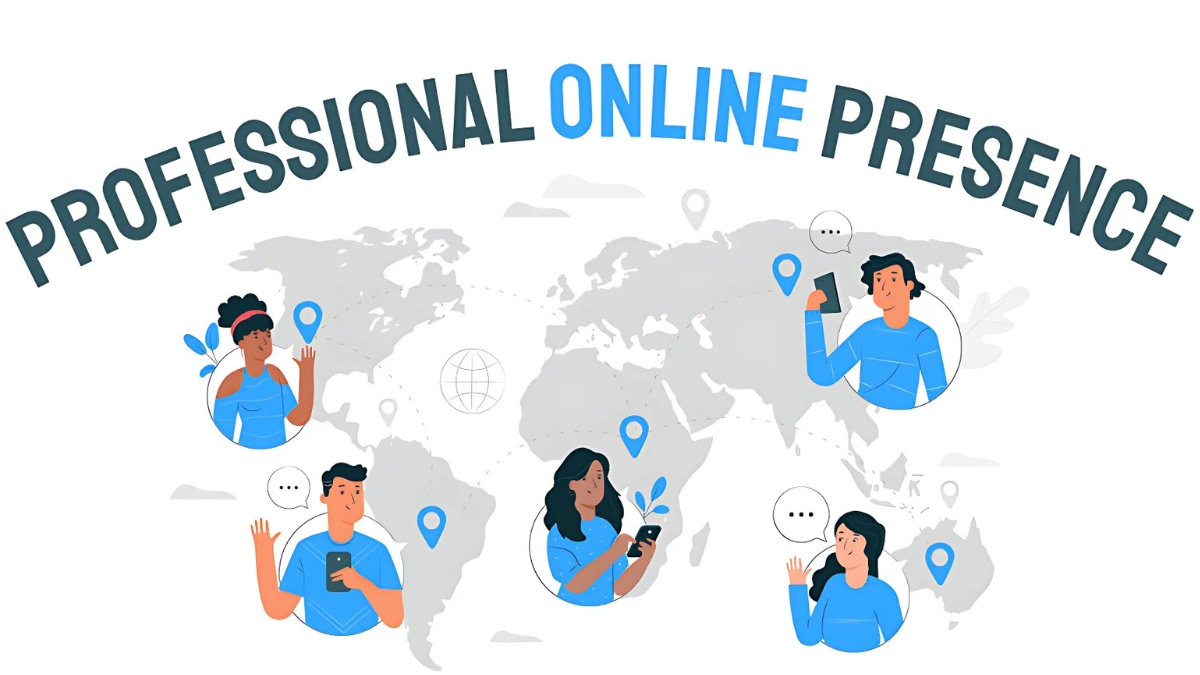
How to Find Freelance Work Online in 2025: A Complete Guide for Beginners
Did you know that 36% of the US workforce participated in freelancing in 2023, contributing an astounding $1.27 trillion to the economy? Welcome to the world of online freelancing – where your skills can unlock endless opportunities from anywhere with an internet connection! Whether you’re looking to escape the 9-to-5 grind or earn extra income on the side, this guide will show you exactly how to start your freelancing journey and find success in the digital marketplace.
Getting Started with Online Freelancing
Let’s talk about the essentials you’ll need, because I learned this one the hard way. My first few months of freelance work online were a mess – I was trying to work from my couch with a dying laptop and spotty WiFi. Not exactly a recipe for success! Here’s what I consider non-negotiable now:
A reliable computer (desktop or laptop) with decent specs High-speed internet connection (and a backup option – I use my phone as a hotspot) A comfortable chair (your back will thank you later) Noise-canceling headphones (game-changer for focus) Project management tools (I started with Trello, now use ClickUp) Time-tracking software (Toggl has been my go-to) Cloud storage for backups (learned this after losing client work – oops!)
Setting up your workspace deserves more attention than I initially gave it. After months of back pain from working at my kitchen table, I finally created a proper home office. It doesn’t have to be fancy – mine’s just a corner of my spare room – but it should be dedicated to work. Good lighting, minimal distractions, and ergonomic setup make a world of difference in your productivity.
Now, let’s get real about income goals. When I started freelance work online, I thought I’d be making six figures within months. Reality check: it took time to build up to a sustainable income. I recommend starting with a simple business plan. Calculate your basic monthly expenses, then add 30% for taxes (yes, really!). That’s your minimum monthly goal. From there, work backward to figure out how many projects or clients you need.

Speaking of taxes – don’t do what I did and ignore them until tax season! As a freelancer, you’re responsible for your own tax payments and should be setting aside money regularly. I learned to treat my freelance work like a real business (because it is!) and started using QuickBooks Self-Employed to track expenses and estimate quarterly taxes.
The learning curve can feel steep, but here’s some practical advice: start with one platform or niche and master it before expanding. I began on Upwork focusing solely on content writing, and only branched out into other services once I had steady clients. This approach helps you build a solid reputation and portfolio without spreading yourself too thin.
Remember, everyone’s journey in freelancing is different. Some folks hit the ground running and find success quickly, while others (like me) take a more scenic route with plenty of learning experiences along the way. The key is to start somewhere and keep improving. Whether you’re looking to make this your full-time gig or just earn some extra income, there’s never been a better time to get into freelancing.
Want a pro tip? Join some freelancer communities on Reddit or LinkedIn. The insights I’ve gained from other freelancers have been invaluable, and sometimes they even lead to project referrals. Just remember to give back to the community once you’ve found your footing!
Imagine working from the comfort of your home (or anywhere in the world) while earning money by helping businesses stay organized and productive. As a Virtual Online Assistant, you can get paid to handle simple tasks like answering emails, scheduling meetings, managing social media, and more — all without needing previous experience. It’s one of the fastest-growing remote job opportunities in 2025, perfect for anyone looking for flexibility and financial freedom.
👉 Ready to start earning as a virtual assistant? Sign up today and begin your remote career here: [CLICK HERE]
Choosing the Right Freelance Platforms
First, let’s talk about the “big three” platforms that dominate the space. Upwork has been my personal favorite for finding quality, long-term clients. The platform takes 20% of your first $500 with each client, then drops to 10% – which seemed steep until I realized the quality of clients made it worthwhile. Their payment protection system has saved me more than once, and I appreciate that they handle all the invoicing and contracts.
Fiverr works completely differently, and boy, did that throw me for a loop at first! Instead of bidding on projects, you create “gigs” and wait for clients to come to you. While the platform takes a flat 20% fee, I’ve found it great for selling standardized services. The key to success on Fiverr? Super specific gig descriptions. My earnings doubled when I stopped offering generic “content writing” and started promoting specific types of articles with clear deliverables.
Now, Freelancer.com is where I started my journey into freelance work online, but I’ll be honest – it can be pretty competitive. The bidding system can lead to price wars, and I’ve seen too many talented folks undervalue their work there. That said, it’s still a viable platform if you’re strategic about which projects you bid on and maintain firm boundaries about your rates.
Here’s something most people don’t talk about – niche platforms can be absolute goldmines! For example:
- ProBlogger Job Board for writers (personal favorite – landed my best-paying client there)
- 99designs for graphic designers
- TopTal for high-end development work
- FlexJobs for remote employment opportunities
- Behance for creative professionals
The fees and payment systems vary widely across platforms. Here’s what I’ve learned through trial and error:
Upwork:
- Escrow system for milestone-based projects
- 5-day payment protection for hourly work
- Withdraw funds to PayPal or bank account
- Processing time: 2-5 business days
Fiverr:
- 14-day clearing period for new sellers
- Funds available immediately after that
- Multiple withdrawal options
- Clear funds every Monday like clockwork

One thing that took me ages to figure out – your success rate isn’t just about doing good work. It’s about managing expectations and communication. I maintain a 98% satisfaction rate across platforms by:
- Always overcommunicating project timelines
- Setting clear boundaries about revision policies
- Providing regular updates without being asked
- Documenting everything in writing
- Responding to messages within 24 hours, even if just to acknowledge receipt
The biggest mistake I see beginners make? Trying to be on every platform at once. Don’t do that! Pick one platform that aligns with your skills and focus on building a stellar reputation there. I spent six months exclusively on Upwork before branching out, and that focused approach really paid off.
For maintaining high ratings, here’s my secret sauce: I treat every single project, no matter how small, like it’s my most important one. That $20 article? Could lead to a $2000 monthly retainer (it happened to me!). That quick logo design? Might bring referrals to three more clients (also happened!).
Listen, finding your footing on these platforms takes time, and that’s okay. Start with one, learn its quirks, build your reputation, and then expand if you want to. Remember, it’s not about being everywhere – it’s about being excellent where you are.
Oh, and here’s a pro tip nobody told me: most platforms have some kind of “preferred freelancer” or “top rated” status. Find out what it takes to achieve that on your chosen platform and make it your goal. The perks – like early access to projects and lower fees – can be game-changing for your business.
Want my final piece of advice? Document everything. Every project requirement, every client communication, every deadline change. It might seem excessive, but it’s saved my bacon more times than I can count. When you’re juggling multiple clients across different platforms, having a clear paper trail is worth its weight in gold.
Building Your Professional Online Presence
Creating a killer freelance profile isn’t just about listing your skills – it’s about telling your story. I remember when I completely overhauled my profile to focus on problem-solving instead of just credentials. The difference was like night and day! Instead of saying “I’m a content writer with 5 years of experience,” I started with “I help B2B companies increase their organic traffic by 150% through strategic content creation.” See the difference? Results speak louder than years of experience.
Your portfolio is absolutely crucial, and here’s something I wish I’d known earlier: you don’t need client work to build one. When I was starting out seeking freelance work online, I created sample projects that showcased exactly what I wanted to be hired for. For writers, this might mean creating blog posts in your target niche. Designers can remake existing brands or create concepts for fictional companies. Developers can build and deploy sample applications.
Here’s my tried-and-true strategy for portfolio development:
- Include 3-5 of your absolute best pieces
- Write detailed case studies explaining your process
- Show before-and-after results when possible
- Update regularly with fresh work
- Remove older pieces that don’t reflect your current skill level
Now, let’s talk about LinkedIn – it’s been an absolute game-changer for my business. But here’s the thing: you can’t just create a profile and expect magic to happen. I spend about 30 minutes each morning engaging with my network. I share insights about my work, comment on industry posts, and participate in relevant discussions. This consistent presence has led to some of my most lucrative client relationships.
Your personal website? It doesn’t need to be fancy, but it needs to be professional. Mine started as a simple one-page site with my portfolio, testimonials, and contact information. Over time, I’ve added a blog where I share industry insights, which has helped tremendously with SEO. Pro tip: buy your domain name with your full name if it’s available – I learned this one the hard way after having to buy back my domain at a premium!

Building a professional network might feel overwhelming, but here’s what works for me:
- Join industry-specific Facebook groups and actually participate
- Attend virtual conferences and workshops
- Follow and engage with thought leaders in your field
- Offer help before asking for anything in return
- Share your knowledge freely through blog posts or social media
One mistake I made early on was trying to be everywhere at once. Don’t do that! Pick 2-3 platforms where your ideal clients hang out and focus on those. For me, that’s LinkedIn, Twitter, and my personal blog. Instagram and TikTok? Not so much for my B2B clients.
The secret sauce to networking is consistency and authenticity. I used to try to sound super professional and formal, but you know what worked better? Just being myself and sharing both successes and struggles. People connect with real experiences, not perfect facades.
Remember to keep your online presence updated too. I set a quarterly reminder to review and refresh all my profiles, portfolio pieces, and website content. It’s amazing how quickly things can become outdated in the digital world.
And here’s something that took me way too long to learn: track everything! Keep a spreadsheet of where your clients are finding you. This helps you focus your efforts on platforms that actually bring in business. When I started doing this, I realized 70% of my clients were coming from LinkedIn, which completely changed my marketing strategy.
Building a strong online presence takes time, but it’s worth every minute. Think of it as your digital storefront – it’s working for you 24/7, attracting potential clients even while you sleep. Just remember to stay authentic, focus on value, and be patient. Rome wasn’t built in a day, and neither is a strong online presence!
Unlock the secrets of digital success with SEO and Social Media Marketing EBook Sets! These comprehensive guides cover essential strategies for improving search engine rankings and creating effective social media campaigns. Learn how to attract organic traffic, increase engagement, and drive conversions across multiple platforms. Ideal for businesses, marketers, and entrepreneurs eager to boost their online presence. Start mastering SEO and social media marketing today!
Winning Your First Clients
First, let’s talk about proposals – they’re not just about listing your skills. My breakthrough moment came when I started treating each proposal like a mini-solution to the client’s problem. Instead of saying “I’m a great writer,” I started with something like “I noticed your blog posts aren’t optimized for featured snippets – here are three specific ways I could help improve your visibility.” That personal touch and problem-solving approach changed everything about my freelance work online.
Here’s my winning proposal formula:
- First paragraph: Show you’ve read and understood their specific needs
- Second paragraph: Share a relevant experience or result
- Third paragraph: Outline your proposed solution
- Final paragraph: Clear next steps and timeline
Now, about rates – this one’s tricky, and I learned the hard way by undercharging for months. Research suggests starting at around 75% of your target rate, then increasing it as you gain reviews. I use this formula to calculate my minimum rate: ((Desired monthly income + 30% for taxes) ÷ Available hours) × 1.5 for non-billable time
Watch out for these red flags in client communications (trust me, I’ve encountered them all):
- Refusing to clearly define project scope
- Pushing for free work samples
- Being vague about budget
- Poor communication from the start
- Rushing to start without proper planning
- Demanding unrealistic turnaround times
Client interviews used to terrify me, but now I treat them like a two-way conversation. Remember, you’re interviewing them too! I keep a list of questions ready:
- What’s your timeline for this project?
- Who’s the main point of contact?
- How do you measure success?
- What challenges did you face with previous freelancers?
- What’s your review and feedback process?

Building long-term relationships has been the key to my success. Here’s what works:
- Deliver slightly more than promised
- Communicate proactively about delays or issues
- Share relevant industry insights with clients
- Remember personal details about their business
- Send quarterly check-ins to past clients
- Ask for feedback after project completion
One mistake I made early on was focusing too much on landing any client rather than the right client. Quality over quantity really matters here. A single good client who values your work can be worth more than ten difficult ones who haggle over every dollar.
Here’s something nobody told me: it’s okay to say no to projects that don’t feel right. I once ignored my gut feeling about a client who seemed overly demanding during negotiations. That turned into three months of stress that wasn’t worth the money. Trust your instincts!
For negotiations, I use the sandwich method:
- Start with agreement on project goals
- Address budget and scope discussions
- End with positive next steps
Remember to document everything! I create a shared Google Doc with project details, deliverables, and timelines after every successful negotiation. This has saved me countless headaches and “but I thought you said…” conversations.
Pro tip: After completing a project successfully, don’t be shy about asking for referrals. Some of my best clients have come through word-of-mouth recommendations. I typically wait until I’ve delivered exceptional work, then simply ask: “Do you know anyone else who might benefit from similar services?”
The journey to winning your first clients might feel slow, but stay patient and keep refining your approach. Focus on solving problems, communicating clearly, and delivering quality work. Before you know it, you’ll have clients coming to you instead of the other way around!
Managing Your Freelance Business
Let’s start with the tools that saved my sanity. After trying what feels like every productivity app under the sun, here’s my core stack:
- Asana for project management (tried Trello first but outgrew it)
- RescueTime for tracking how I actually spend my time (eye-opening!)
- Forest app for focused work sessions
- Google Calendar for time blocking
- Toggl for client time tracking
Time management was my biggest struggle when juggling multiple projects. Here’s what transformed my productivity: I now block my days into three categories:
- Deep work (writing, designing, coding)
- Shallow work (emails, admin tasks)
- Buffer time (because something always comes up!)
Speaking of freelance work online, one of my most embarrassing early mistakes was not using contracts. Learn from my mistake! After a client ghosted me without paying, I invested in solid contract templates. Now I use:
- A master service agreement for ongoing work
- Project-specific statements of work
- Clear payment terms and milestones
- Scope change procedures
- Intellectual property clauses
For managing finances, I spent way too long using a messy spreadsheet before switching to proper accounting software. Here’s my current system:
- QuickBooks Self-Employed for tracking income/expenses
- Separate business checking account
- Monthly financial review sessions
- Automated invoice reminders
- 30% of income automatically moved to tax savings
Project juggling? That’s an art I’m still perfecting, but here’s what helps:
- Never promise immediate availability
- Build in buffer time between deadlines
- Use project management software religiously
- Communicate progress proactively
- Set internal deadlines 2-3 days before actual ones

Let’s talk about protecting your work – something I learned about the hard way. Always:
- Register copyrights for significant works
- Use watermarks on draft designs
- Send low-resolution previews
- Keep backups of everything (I use both local and cloud)
- Document all client communications
The real game-changer was setting up systems for everything. When I started treating my freelance business like a real business (because it is!), everything improved. I created standard operating procedures for:
- Client onboarding
- Project kickoffs
- Weekly scheduling
- Invoice processing
- Follow-up communications
Want to know my secret for scaling? Automation! I automated everything I could:
- Email responses for common inquiries
- Invoice generation and reminders
- Social media posting
- Project status updates
- Client follow-ups
Here’s something nobody talks about enough: burnout is real in freelancing. I learned to schedule regular breaks and actually take them. No more working weekends unless it’s a true emergency (and trust me, real emergencies are rare).
A pro tip for maintaining work-life balance: set up business hours and stick to them. I used to answer client messages at 11 PM – big mistake! Now I use scheduling tools to send responses during business hours, even if I write them late at night.
Finally, don’t forget about professional development. I set aside 5% of my income for courses, tools, and training. It’s an investment that pays off in higher rates and better clients.
Remember, managing a freelance business is a skill that improves with time. Start with basic systems and refine them as you grow. The goal isn’t perfection – it’s progress and sustainability. Keep what works, ditch what doesn’t, and always be open to better ways of doing things!
Starting your journey in online freelancing might seem daunting, but with the right approach and persistent effort, you can build a thriving freelance career. Remember that success doesn’t happen overnight – focus on delivering quality work, building strong client relationships, and continuously improving your skills. Ready to take the first step? Choose your preferred platform, create your profile, and start bidding on projects that match your expertise. Your freelance success story starts now!
The demand for virtual assistants continues to grow, and now is the perfect time to step into this rewarding, flexible career path. Whether you’re looking for a side hustle or a full-time remote job, becoming a virtual assistant offers freedom, stability, and income potential—all from the comfort of your home. You don’t need a fancy degree or years of experience—just a willingness to learn and take action.
👉 Take the first step toward your remote career today.
Click the link below to sign up and start getting paid as a virtual assistant! [CLICK HERE]





